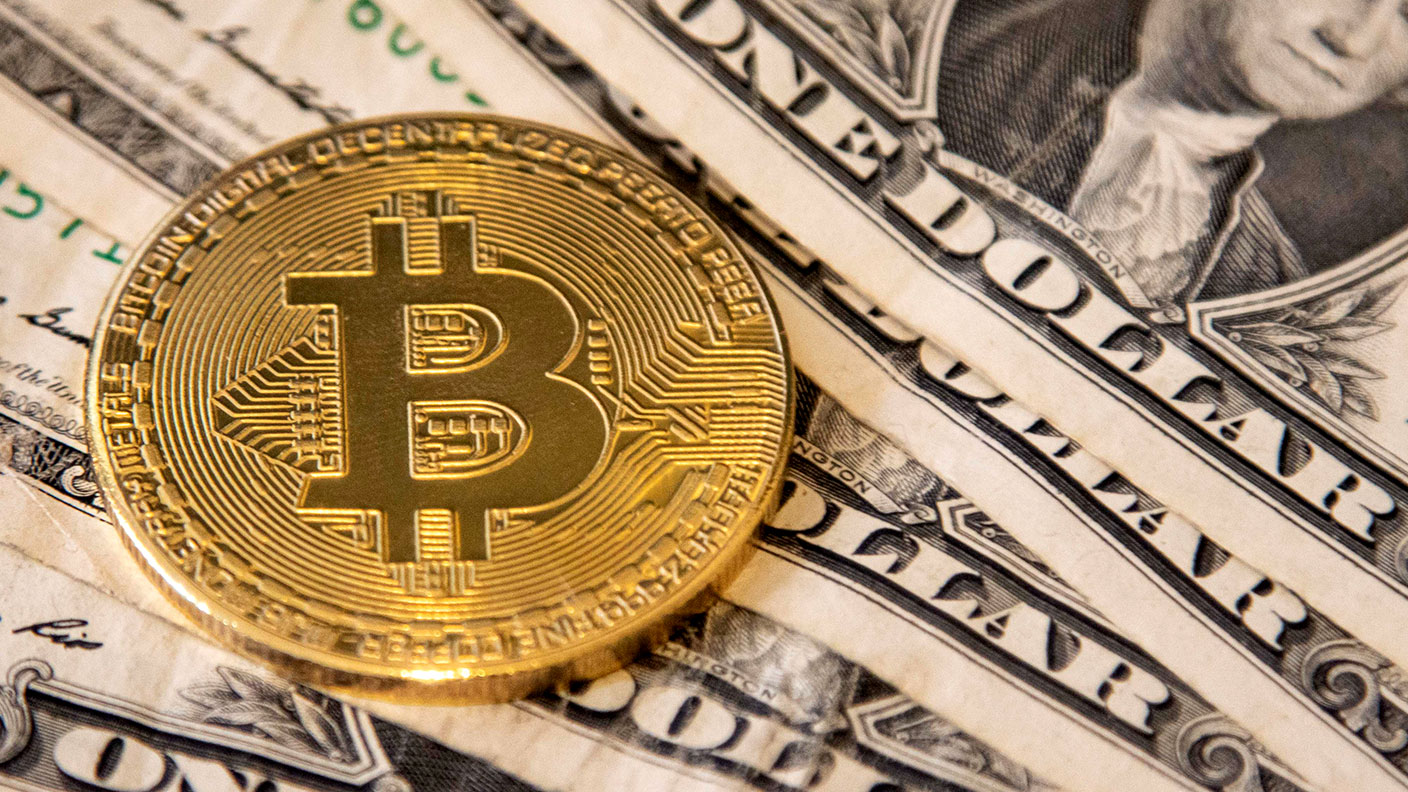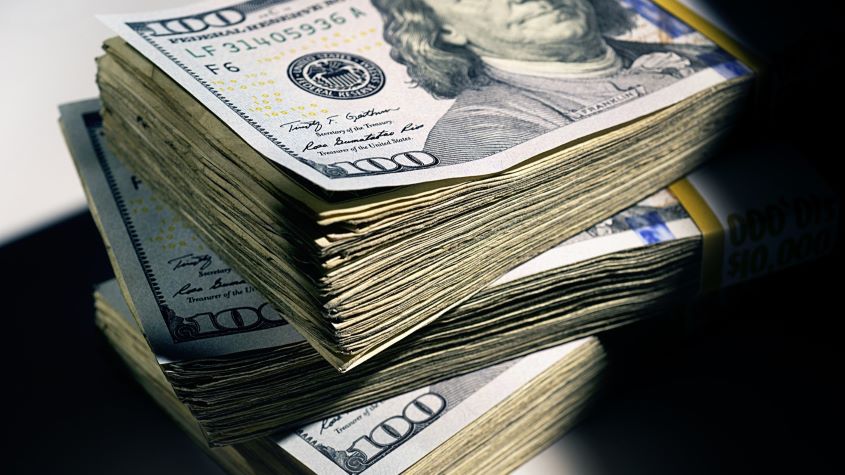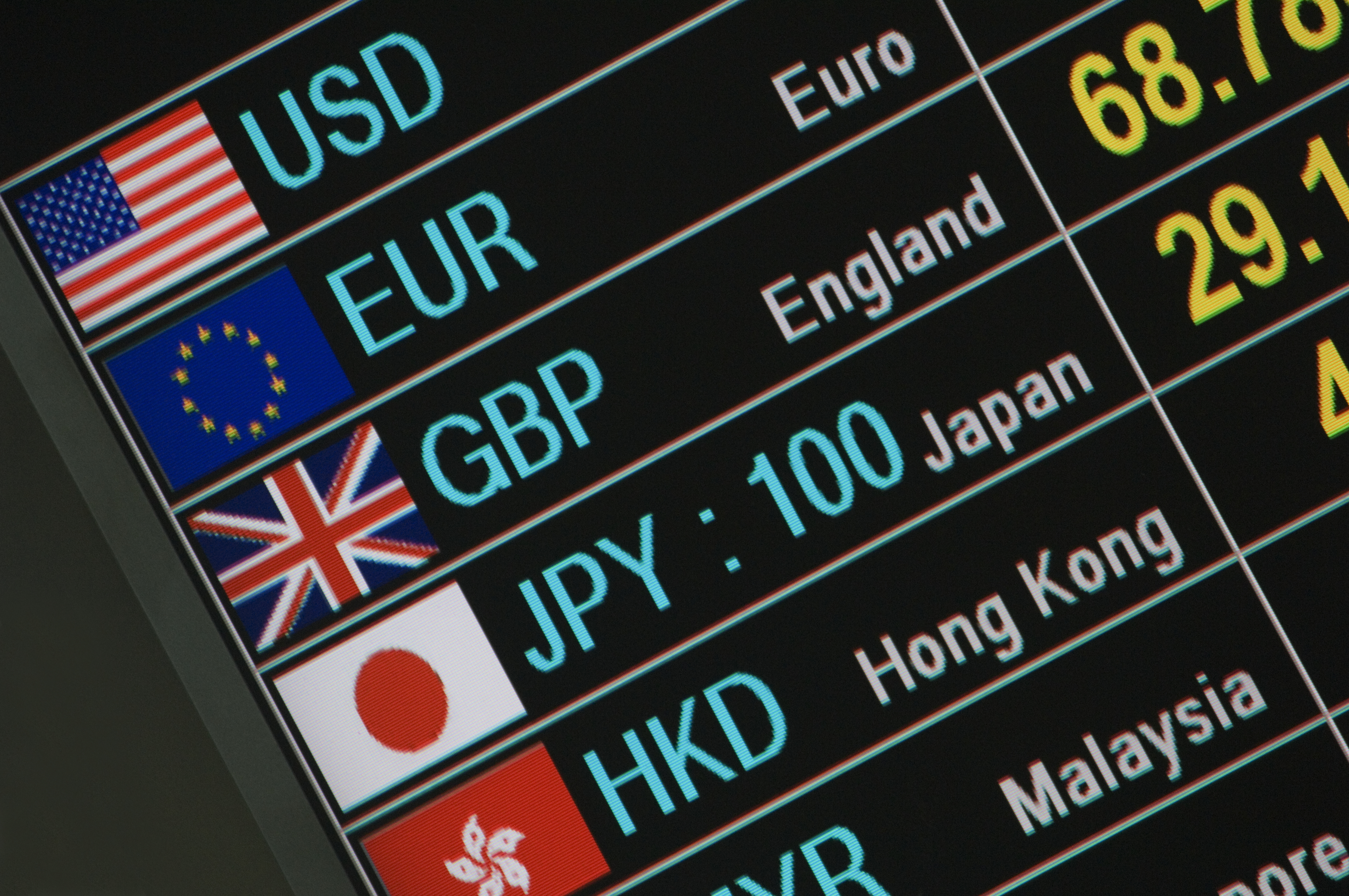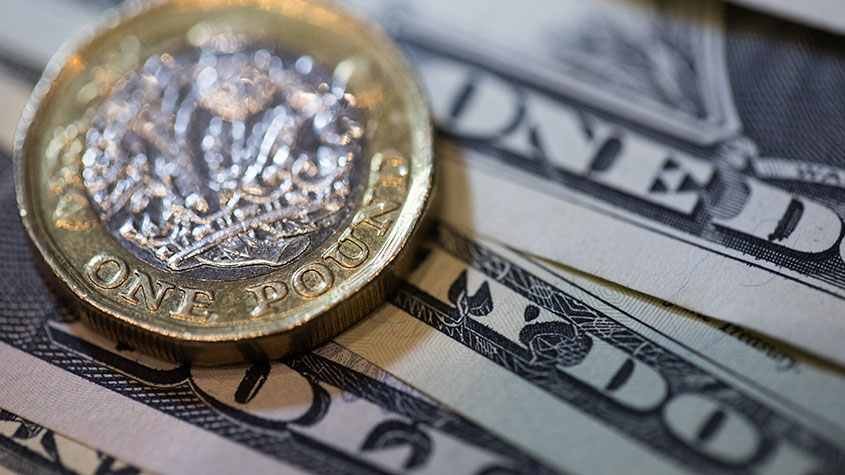We’re at another turning point in the 100-year cycle of money – here’s what to do
Money has always moved in 100-year cycles. And we’re at another turning point now, says Dominic Frisby – money has gone from gold to government-backed paper, and now to blockchain technology. Here’s what that means for you.


We are at an inflection point in an enormous financial cycle, a cycle that takes a hundred years to turn full circle – the hundred-year cycle of money.
This cycle marked the beginning of the gold standard, the end of the gold standard, the beginning of the fiat standard and – perhaps – now its end, as we see the emergence of a new standard – the crypto standard.
Read on and I shall explain.
MoneyWeek
Subscribe to MoneyWeek today and get your first six magazine issues absolutely FREE

Sign up to Money Morning
Don't miss the latest investment and personal finances news, market analysis, plus money-saving tips with our free twice-daily newsletter
Don't miss the latest investment and personal finances news, market analysis, plus money-saving tips with our free twice-daily newsletter
Cycles are seductive, which is why they’re so dangerous
Many dismiss cycles work as little more than market gibberish. I have a great deal of sympathy with that view; it’s easy to look at past events, find an arbitrary pattern to fit them – perhaps even stretch events slightly to suit the pattern – and call it a ‘cycle’.
They’re easy to write about, and, because of the shortcomings of the human brain, where we seem determined to believe that some higher power is at work, they make for compelling narratives. Before you know it, you’re peddling a newsletter.
So often, as soon as I hear the word “cycle”, I try to erect a defensive mental barrier. I want as little of that stuff as possible in my head. Cycles are all very well in hindsight, but, in real time, trading or investing on the basis of a cycle is a very different prospect.
I’ve seen people – indeed I’ve done it myself – get so wedded to the idea that some cycle is in motion that you end up ignoring what is actually happening in the world about you. House prices are going to fall because of where we are in the 14-year property cycle. Well, no. They’re going up. Anyone can see that.
At the same time, there are cycles turning around us all the time. From the moon, to the seasons of the year to the cycle of life – what Shakespeare called the “seven ages of man”.
In financial markets there are hype cycles, Kondratiev waves, the aforementioned 14-year cycle in real estate, the four-year “presidential cycle” in US stocks, the seven-year crash cycle, commodity super-cycles, demographics cycles – and Lord knows what else. Heck, what are bull markets and bear markets – good times and bad times – if not cycles?
So, with that rather lengthy disclaimer in mind, let us turn our attention to the 100-year cycle of money. By the way, this is a cycle I have observed – it’s not an “official” cycle.
A brief history of money and technology
Money is technology. What we use as money is often determined by the technology available at the time – usually communications technology.
The first money sent across the Atlantic was sent by boat – Vikings or Basque fishermen or aboard the ships of Christopher Columbus. But it was the successful laying of a transatlantic cable in the mid-19th century that enabled money to be sent by wire. Not actual gold or silver or paper, just a message between two trusted third parties – a record of debt.
That message took several hours to cross. Today with digital technology it is instantaneous – although traditional banking’s processing of that message can take several days. Which is why cryptocurrency, which only takes a few seconds, is so much better for international payments.
The clay tokens that represented measures of sheep or barley, which were used to record debts in ancient Mesopotamia, morphed into the first hieroglyphs and eventually into handwriting. This was just ancient communications technology.
Coinage must be one of the most successful technologies ever invented, given that, almost 3,000 years after the first coins were invented in ancient Lydia, we are still using them today. But even coinage, it could be argued, is a form of communication. With the head of the ruler, coins were a form of propaganda, as well as a form of certification of weight and metal purity.
Gutenberg’s invention of the printing press in the mid-15th century (by the way, Gutenberg was also a goldsmith) enabled a more efficient way to record debts than hand-written notes. By the early to mid-1600s, even here in the UK, written promises to pay – which the Bank of England calls “running cash notes” – were in use. The Bank of England has hand-written cheques in its collection from the mid-1600s, and after the bank was formed in 1694, its notes were formally printed.
National finances at the time were a mess. We had just had the Glorious Revolution after decades of civil war, the lucrative Hearth Tax had been abolished, and King William III was involved in various expensive overseas conflicts. The Bank of England was formed with this in mind, to help raise the money the crown needed.
There was a run on British silver – it was worth more melted down as bullion on the continent that at its face value in the UK – counterfeit coins were rampant, and the great scientist Isaac Newton was called in to the bank in 1696 to oversee the Great Recoinage. Newton would eventually become Master of the Mint, a position he held till his death in 1727.
In 1717, his report “On the State of the Gold and Silver Coin” fixed the value of the guinea and effectively put the UK on a gold standard. It was perhaps an accidental gold standard: he had set the price of silver too low, causing it effectively to go out of circulation. The guinea was a quarter ounce of gold; one pound sterling, fixed at twenty-one shillings of silver.
So that is our first marker in this one hundred-year cycle: 1717.
We’re at another turning point – you should prepare accordingly
At the end of the 18th century, Prime Minister William Pitt’s policy of sending gold abroad to fund Napoleon’s enemies on the continent – known as the “Cavalry of St George”, because of the image of St George on the coins – resulted in a shortage of gold at home. Then the cost of the war saw the UK abandon the backing of gold to its paper money and, around the turn of the 19th century, inflation ran wild.
As the war ended, we got another Great Recoinage – this one in 1816 – to restabilise currency. The first “pound coin” was struck – the gold sovereign – at just under a quarter of an ounce of gold. This currency of the British Empire would last another 100 years.
It was another expensive war that saw its demise – the Great War, World War I. In 1914 the sovereign quickly vanished from circulation as the UK abandoned the gold standard to free up the printers and debase its money to pay for the conflict. And so began the fiat standard.
Here we are, just over 100 years on, in another period of monetary experimentation, printing and debasement. Overseas conflicts have been a huge drain on the resources of the world’s major superpower, no longer Britain, but the US.
Its military is a vast expense. There were (and still are) the wars on terror and on drugs, then the Global Financial Crisis and mass bailouts. Interest rates are being suppressed. We have this newfangled quantitative easing (QE). The idea of modern monetary theory (MMT) is prevalent.
Globalisation and improved productivity masked inflation, though we certainly saw it in property and asset prices. Supply chain failures and labour shortages now mean that inflation is much more apparent and harder to conceal.
In reaction to it all, Satoshi Nakamoto devised his blockchain and we got bitcoin, which has spread to the mainstream, so much so that central banks are now evolving their own programmable money, CBDCs. Crypto-money is the latest evolution in technology.
Will the world embrace the next stage of QE, the ultra-loose MMT of central banks? Or will inflation be such that it embraces some kind of hard-money standard, perhaps based on gold, which central banks own, or on cryptographic computer power (which they have little control over)? Or will it be a bit of everything?
As I say, we are at an inflection point in the hundred-year cycle of money. Money is technology. I urge you to have some exposure to this latest evolution.
Daylight Robbery – How Tax Shaped The Past And Will Change The Future is now out in paperback at Amazon and all good bookshops, with the audiobook, read by Dominic, on Audible and elsewhere.
Get the latest financial news, insights and expert analysis from our award-winning MoneyWeek team, to help you understand what really matters when it comes to your finances.
Dominic Frisby (“mercurially witty” – the Spectator) is as far as we know the world’s only financial writer and comedian. He is the author of the popular newsletter the Flying Frisby and is MoneyWeek’s main commentator on gold, commodities, currencies and cryptocurrencies. He has also taken several of his shows to the Edinburgh Festival Fringe.
His books are Daylight Robbery - How Tax Changed our Past and Will Shape our Future; Bitcoin: the Future of Money? and Life After the State - Why We Don't Need Government.
Dominic was educated at St Paul's School, Manchester University and the Webber-Douglas Academy Of Dramatic Art.
You can follow him on X @dominicfrisby
-
 The most influential people of 2025
The most influential people of 2025Here are the most influential people of 2025, from New York's mayor-elect Zohran Mamdani to Japan’s Iron Lady Sanae Takaichi
-
 Millions of parents are missing out on up to £720 a year in extra pension cash – are you affected?
Millions of parents are missing out on up to £720 a year in extra pension cash – are you affected?A mum who narrowly missed out on the pension boost said she “never knew the government rule existed” and wants other parents to use it
-
 Why you should keep an eye on the US dollar, the most important price in the world
Why you should keep an eye on the US dollar, the most important price in the worldAdvice The US dollar is the most important asset in the world, dictating the prices of vital commodities. Where it goes next will determine the outlook for the global economy says Dominic Frisby.
-
 What is FX trading?
What is FX trading?What is FX trading and can you make money from it? We explain how foreign exchange trading works and the risks
-
 The Burberry share price looks like a good bet
The Burberry share price looks like a good betTips The Burberry share price could be on the verge of a major upswing as the firm’s profits return to growth.
-
 Sterling accelerates its recovery after chancellor’s U-turn on taxes
Sterling accelerates its recovery after chancellor’s U-turn on taxesNews The pound has recovered after Kwasi Kwarteng U-turned on abolishing the top rate of income tax. Saloni Sardana explains what's going on..
-
 Why you should short this satellite broadband company
Why you should short this satellite broadband companyTips With an ill-considered business plan, satellite broadband company AST SpaceMobile is doomed to failure, says Matthew Partridge. Here's how to short the stock.
-
 It’s time to sell this stock
It’s time to sell this stockTips Digital Realty’s data-storage business model is moribund, consumed by the rise of cloud computing. Here's how you could short the shares, says Matthew Partridge.
-
 Will Liz Truss as PM mark a turning point for the pound?
Will Liz Truss as PM mark a turning point for the pound?Analysis The pound is at its lowest since 1985. But a new government often markets a turning point, says Dominic Frisby. Here, he looks at where sterling might go from here.
-
 Are we heading for a sterling crisis?
Are we heading for a sterling crisis?News The pound sliding against the dollar and the euro is symbolic of the UK's economic weakness and a sign that overseas investors losing confidence in the country.
